Input interpretation

1, 2-dihydroxybutane
Chemical names and formulas
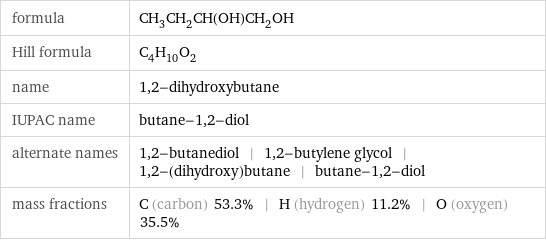
formula | CH_3CH_2CH(OH)CH_2OH Hill formula | C_4H_10O_2 name | 1, 2-dihydroxybutane IUPAC name | butane-1, 2-diol alternate names | 1, 2-butanediol | 1, 2-butylene glycol | 1, 2-(dihydroxy)butane | butane-1, 2-diol mass fractions | C (carbon) 53.3% | H (hydrogen) 11.2% | O (oxygen) 35.5%
Lewis structure

Draw the Lewis structure of 1, 2-dihydroxybutane. Start by drawing the overall structure of the molecule: Count the total valence electrons of the carbon (n_C, val = 4), hydrogen (n_H, val = 1), and oxygen (n_O, val = 6) atoms: 4 n_C, val + 10 n_H, val + 2 n_O, val = 38 Calculate the number of electrons needed to completely fill the valence shells for carbon (n_C, full = 8), hydrogen (n_H, full = 2), and oxygen (n_O, full = 8): 4 n_C, full + 10 n_H, full + 2 n_O, full = 68 Subtracting these two numbers shows that 68 - 38 = 30 bonding electrons are needed. Each bond has two electrons, so the above diagram has all the necessary bonds. There are 15 bonds and hence 30 bonding electrons in the diagram. Lastly, fill in the remaining unbonded electrons on each atom. In total, there remain 38 - 30 = 8 electrons left to draw: Answer: | |
3D structure
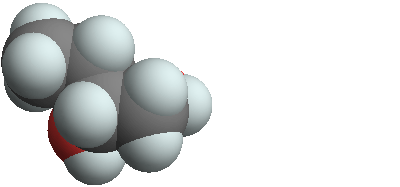
3D structure
Basic properties
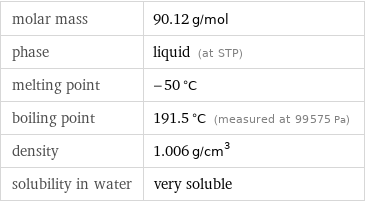
molar mass | 90.12 g/mol phase | liquid (at STP) melting point | -50 °C boiling point | 191.5 °C (measured at 99575 Pa) density | 1.006 g/cm^3 solubility in water | very soluble
Units

Liquid properties (at STP)
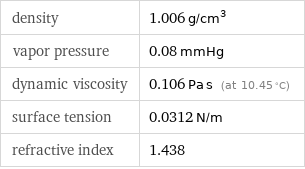
density | 1.006 g/cm^3 vapor pressure | 0.08 mmHg dynamic viscosity | 0.106 Pa s (at 10.45 °C) surface tension | 0.0312 N/m refractive index | 1.438
Units

Thermodynamic properties

molar heat of vaporization | 48.26 kJ/mol specific heat of vaporization | 0.5355 kJ/g critical temperature | 680 K critical pressure | 5.21 MPa (at STP)
Chemical identifiers
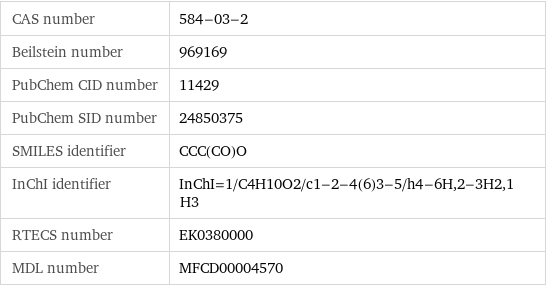
CAS number | 584-03-2 Beilstein number | 969169 PubChem CID number | 11429 PubChem SID number | 24850375 SMILES identifier | CCC(CO)O InChI identifier | InChI=1/C4H10O2/c1-2-4(6)3-5/h4-6H, 2-3H2, 1H3 RTECS number | EK0380000 MDL number | MFCD00004570
NFPA label

NFPA label
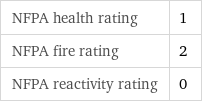
NFPA health rating | 1 NFPA fire rating | 2 NFPA reactivity rating | 0
Safety properties

flash point | 93.33 °C autoignition point | 390 °C lower explosive limit | 2.4% (concentration in air) upper explosive limit | 13.5% (concentration in air)
Toxicity properties

RTECS classes | other